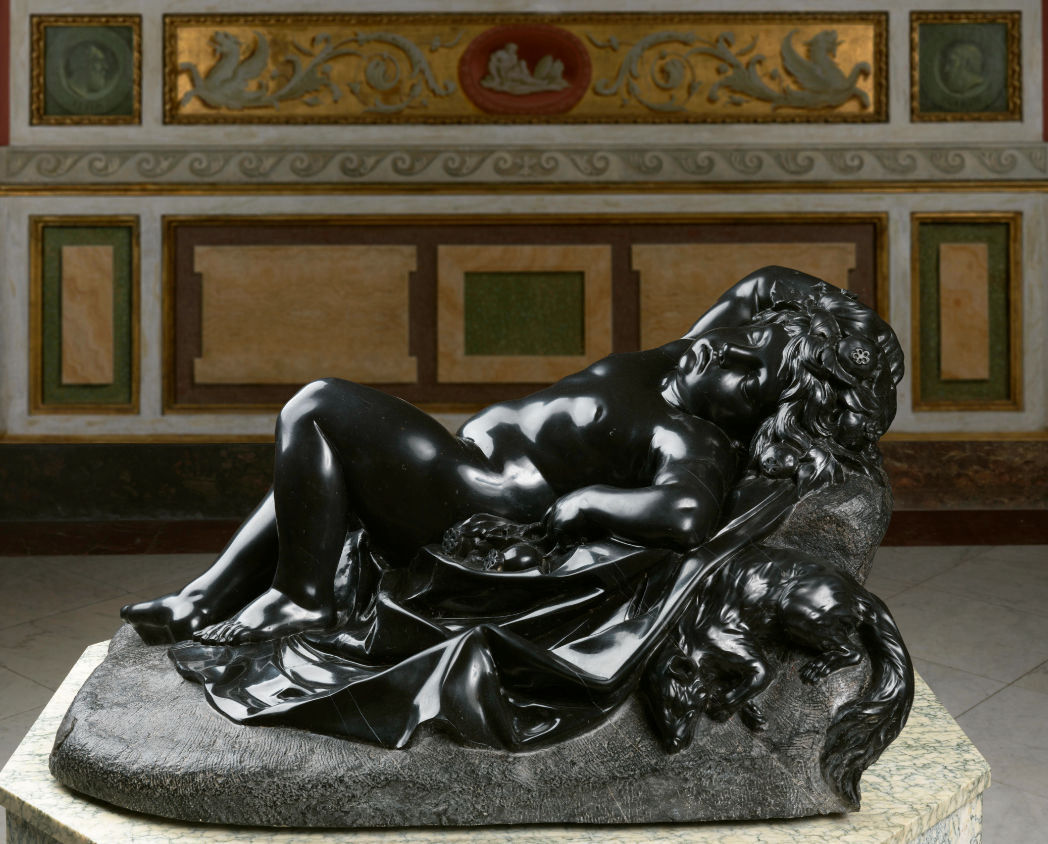GALLERIA BORGHESE TELLS A MASTERPIECE: SLEEP OF ALGARDI

Alessandro Algardi, the sculptor of this languid work, arrived in Rome from his native Bologna during the papacy of Gregory XV Ludovisi, a great patron of Bolognese artists. There Algardi became a friend of Domenichino, who helped him make a name for himself. His production is characterized by classicism tempered by his taste for naturalness and by moderate baroque features, a style that differed from Bernini’s predominant one, and that found favor especially during the papacy of Innocent X, who preferred Algardi and entrusted him with major works.
Algardi’s commission for the sculpture of Sleep was mediated by Marcello Provenzale, the great mosaicist, who had already worked for Scipione Borghese. There are two documents from 1635-36 of payments made to the sculptor “for a Putto in touchstone” signed by Marcantonio Borghese, the cardinal’s cousin and heir. Passeri, Algardi’s biographer, supposes that Algardi executed the work in black Flanders marble (improperly called touchstone), which is harder than statuary marble, to debunk the gossip that he was no longer able to carve marble. While waiting for the slow payments for his major works, the artist kept himself busy executing small works, and this had fueled the gossip. Provenzale also supervised the execution of the wooden pedestal for the sculpture. To accompany the sculpture, Algardi also designed two black marble amphorae, which were engraved by Silvio Calci. Because of their placement next to the Sleep, in the 18th century the archeologist de Montfaucon thought that they were used to contain sleep-inducing liquids.
The sculpture is inspired by a Hellenistic prototype that was well-known in the 17th century. Languidly slumped on a sheet, the sleeping putto has the iconographic attributes characteristic of the ancient portrayals of the Greek Hypnos and the Roman Somnus: wings flapping without making noise (like the butterfly wings of the sculpture) and the poppy flowers that brush the eyes of men, inducing oblivion. In the classical; age, Sleep was portrayed as a boy, but in the Hellenistic period its portrayal as a putto took root and established itself over the centuries.
The use of black marble reinforces the meaning of the allegory. In effect, the third phase of the night is black, as described in Cesare Ripa’s iconology, and is accompanied by a dormouse like the one we see curled up next to the putto. The work expresses pleasantness, but also ambiguity and languor in the total relaxation of the sleeper, who is clutching the flowers loaded with opium. In any case, the subject was popular and widespread. The Galleria Spada houses a copy in white marble, where the putto is in a wooden cradle.
Algardi’s sculpture has an old crack – joined with a hidden cramp – the cause of which is unknown. In the past, the work was displayed in a room on the second floor of the Villa, called, in effect, “room of the Sleep” in the ancient descriptions. It is now in Room XV.